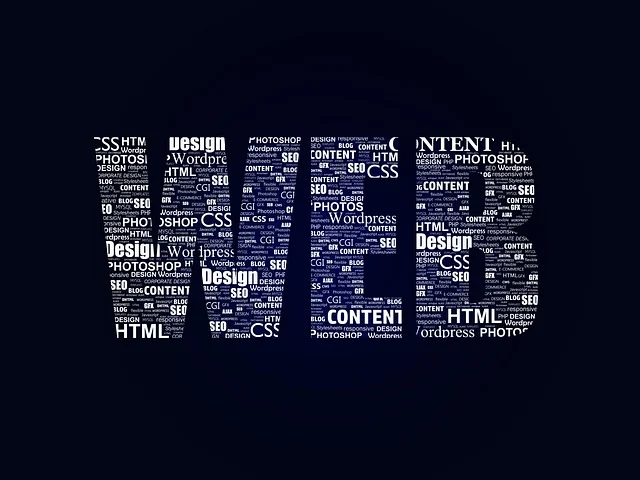In the ever-evolving landscape of digital marketing, web banners remain a cornerstone of online advertising strategies. These digital billboards serve as powerful tools for capturing audience attention, driving traffic, and ultimately, boosting conversions. However, with the proliferation of online content, creating effective web banners requires more than just flashy graphics; it demands a deep understanding of design principles, user psychology, and industry trends.
In this comprehensive guide, we'll delve into the intricate world of web banner design, exploring everything from the fundamentals of visual composition to advanced techniques for optimizing performance. Whether you're a seasoned designer looking to refine your skills or a newcomer eager to make a splash in the digital realm, this article will equip you with the knowledge and insights needed to craft compelling web banners that resonate with your target audience.
Understanding Web Banners: An Overview
Before we delve into the nuances of web banner design, let's establish a clear understanding of what web banners are and their role in online advertising. Simply put, web banners are graphical elements placed on web pages with the primary objective of promoting a product, service, or brand. These banners come in various sizes and formats, including static images, animated GIFs, HTML5 animations, and rich media ads.
Web banners serve multiple purposes within the digital marketing ecosystem:
Brand Awareness: Banners help to increase brand visibility by showcasing logos, taglines, and visual elements associated with a brand.
Direct Response: Banners can prompt immediate action from viewers, such as clicking through to a website, signing up for a newsletter, or making a purchase.
Lead Generation: By offering incentives or enticing offers, banners can capture user information, thereby generating leads for future marketing efforts.
Event Promotion: Banners are effective tools for promoting events, sales, or special promotions, driving traffic to specific landing pages or registration forms.
Now that we've established the significance of web banners, let's explore the key principles and best practices for designing banners that command attention and drive results.
Essential Elements of Effective Web Banner Design
Clear Call-to-Action (CTA): A compelling CTA is the backbone of any successful web banner. Whether it's "Shop Now," "Learn More," or "Get Started," the CTA should be concise, action-oriented, and prominently displayed within the banner.
Eye-catching Visuals: High-quality images, graphics, and animations are essential for grabbing the viewer's attention. Use vibrant colors, engaging imagery, and dynamic effects to create visual appeal and convey your message effectively.
Concise Messaging: Keep your copy short, succinct, and easy to read. Use punchy headlines and concise body text to communicate your value proposition clearly and succinctly.
Brand Consistency: Ensure that your web banners align with your brand's visual identity, including color schemes, fonts, and imagery. Consistent branding helps to reinforce brand recognition and build trust with your audience.
Responsive Design: With the proliferation of mobile devices, it's essential to design banners that adapt seamlessly to different screen sizes and resolutions. Embrace responsive design principles to ensure optimal viewing experiences across desktops, smartphones, and tablets.
Whitespace and Hierarchy: Pay attention to whitespace and visual hierarchy to guide the viewer's eye and emphasize key elements within the banner. Strategic use of whitespace helps to prevent clutter and enhance readability.
Animation (If Applicable): If incorporating animation into your banners, ensure that it enhances rather than detracts from the user experience. Use subtle animations to draw attention to important elements without overwhelming the viewer.
A/B Testing: Experiment with different design elements, CTAs, and messaging variations to identify the most effective combinations. A/B testing allows you to optimize your banners for maximum performance and conversion rates.
Advanced Techniques for Optimizing Web Banners
Dynamic Personalization: Leverage user data and behavioral insights to deliver personalized banner ads tailored to individual preferences and interests. Dynamic content insertion allows you to customize banners based on factors such as demographics, browsing history, and past interactions.
Geo-targeting: Geo-targeted banners enable you to deliver localized messages and offers based on the user's geographic location. By targeting specific regions or cities, you can tailor your banners to resonate with local audiences and drive foot traffic to nearby stores or events.
Retargeting Campaigns: Implement retargeting strategies to re-engage users who have previously interacted with your website or shown interest in your products or services. By serving targeted banners to these users across various online channels, you can encourage them to return and complete their purchase journey.
Interactive Elements: Incorporate interactive elements such as quizzes, polls, or games into your banners to increase engagement and foster a deeper connection with your audience. Interactive banners not only capture attention but also encourage active participation, driving higher click-through rates and conversions.
Behavioral Triggers: Trigger-based banners leverage user behavior and actions to deliver timely and relevant messages. Whether it's reminding users of items left in their shopping cart or promoting limited time offers based on browsing patterns, behavioral triggers can enhance the effectiveness of your banner campaigns.
Best Practices for Banner Design Across Different Platforms
Social media: When designing banners for social media platforms such as Facebook, Instagram, and Twitter, adhere to each platform's specific guidelines regarding dimensions, aspect ratios, and file formats. Incorporate engaging visuals, concise copy, and relevant hashtags to maximize visibility and engagement.
Display Advertising Banners: For display advertising campaigns across the Google Display Network and other ad networks, prioritize clarity and simplicity in your banner designs. Use standard ad sizes such as leaderboard, skyscraper, and rectangle, and optimize your banners for fast loading times to minimize bounce rates.
Mobile Banners: Given the prevalence of mobile browsing, it's crucial to design banners with mobile users in mind. Opt for mobile-friendly formats such as square or vertical banners and ensure that your CTAs and key messaging are prominently displayed within the limited screen real estate.
Email Banners: When incorporating banners into email marketing campaigns, focus on creating visually appealing designs that complement the overall aesthetic of your emails. Use persuasive copy and clear CTAs to encourage recipients to click through to your website or landing page.
In an era defined by digital distractions and fleeting attention spans, the art of web banner design has never been more critical. By mastering the principles and techniques outlined in this guide, you can create banners that not only capture attention but also drive meaningful engagement and conversions. Whether you're crafting banners for social media, display advertising, or email campaigns, remember to prioritize clarity, creativity, and user-centric design. With strategic planning, thoughtful execution, and continuous optimization, your web banners have the potential to make a lasting impact in the digital sphere.
CLICK HERE TO GET A PROFESSIONAL WEB BANNER DESIGNER.














No comments:
Post a Comment